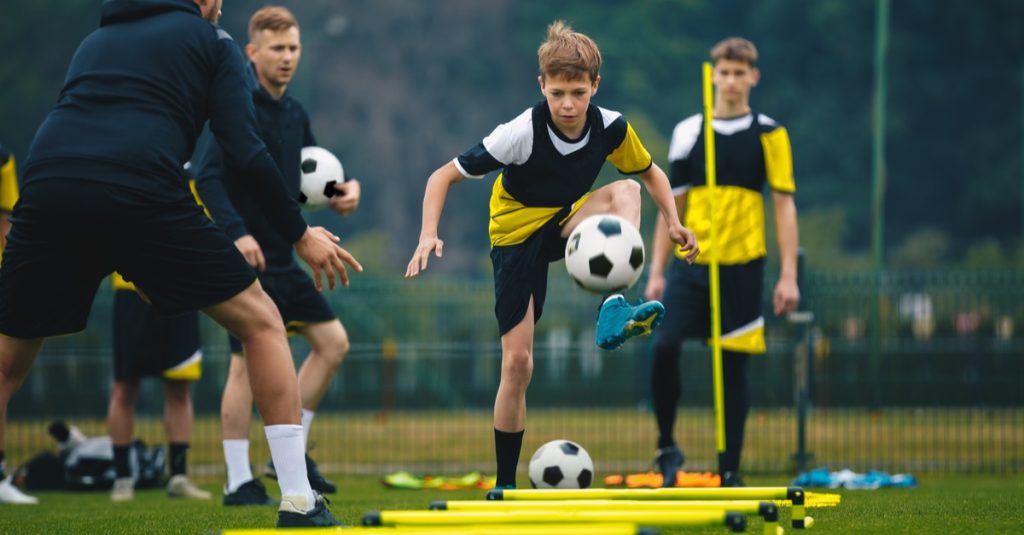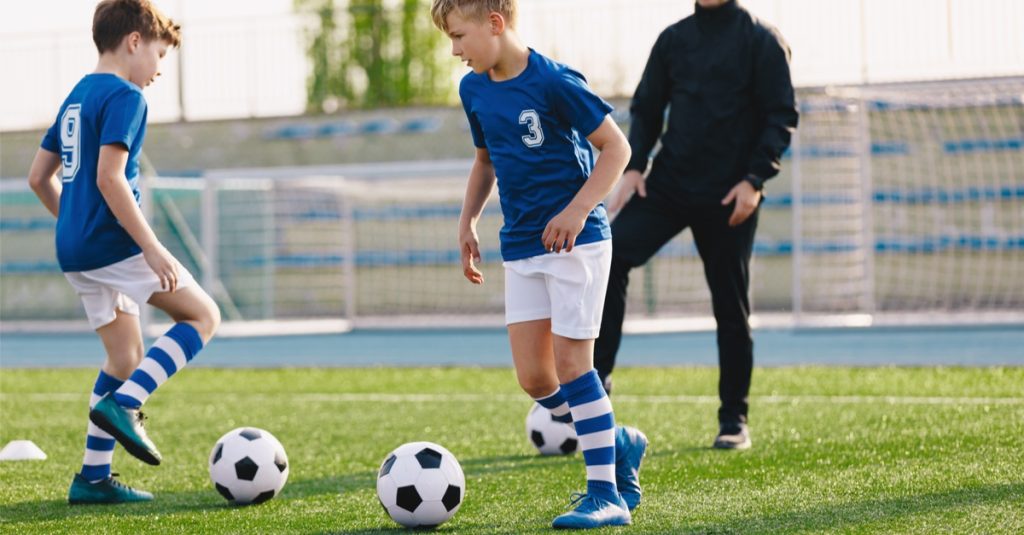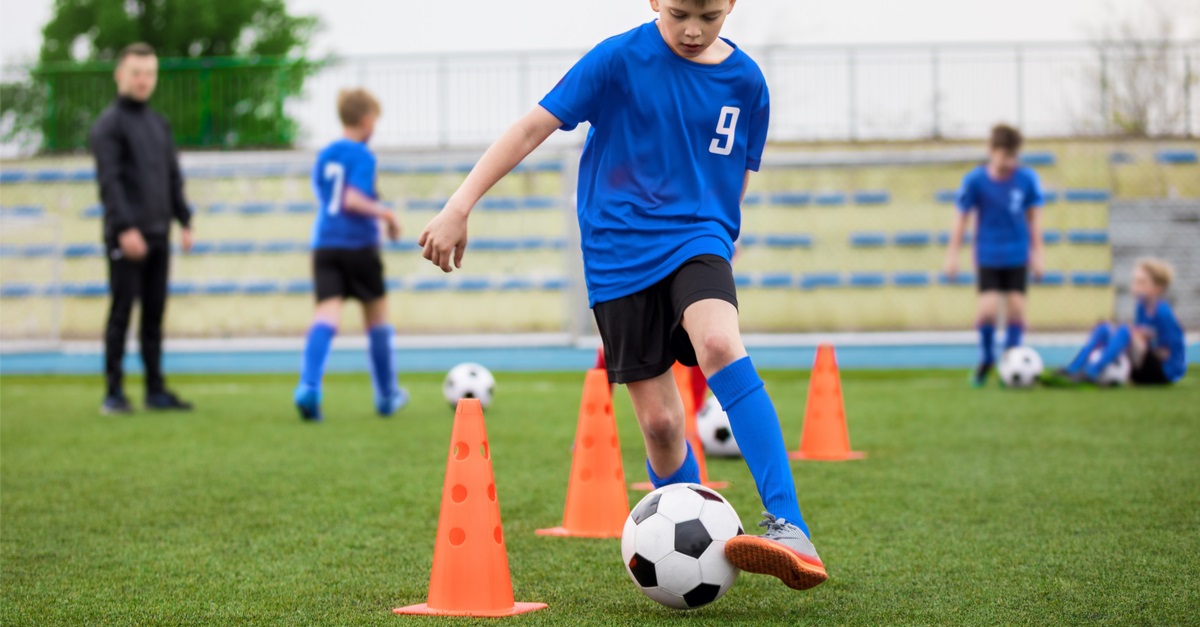Last Updated on October 21, 2022 by admin
The football season is fast approaching, and like most kids, you might be showing an interest in playing football this year. As a parent, it can be a challenging decision to let your child play football, especially when the potential for injury is considered. Thankfully, flag football is a safer alternative that provides all the fun without danger.
A great way to get your child interested and excited for the new season is to teach them flag football drills. Doing these drills can enable your child to hone their skills. It can also be a great bonding moment for them and you. Even better is that once they get the basics down, they can teach their friends and have a great time doing it.
If you are reading this article, chances are you are interested in helping your child get better at flag football even though you don’t know how to go about it. Fortunately, we have taken the guesswork out of this process by providing the top 5 practice drills to help your child get better at flag football. We have taken the time to combine some of the best drills to ensure your child can reach their highest potential while having a wonderful time and staying safe.
Receiving Drills

The Fundamentals of Running a Route
To be a good receiver, you need to know way more than catching a ball. An essential aspect of being a great receiver is knowing how to get open. As a result, you will learn how running routes can help your child create a sufficient amount of space for the quarterback to throw the ball. A few of the routes utilized in flag football are:
Out route has the player run in a straight line for a particular number of yards, and then they make a 90 degree turn towards the side-line.
Curl route: a curl route has the player run straight for a particular number of yards and then turn on a dime to catch the football.
Slant route: the slant route has a receiver take just two steps from the line of scrimmage and then make a 45-degree angle run across the field of play.
Deep route: the deep route is also known as the go route. It is perhaps one of the most accessible routes to remember. The receiver runs a straight line for about ten or more yards to beat the defender and get open.
Your child has to first run them without anyone passing the ball to them to start practicing these routes. You must pay special attention to their footwork when making the route cut. For instance, if they have to turn left on the slant route, the cut-off should be on their right foot.
Once your child gets the hang of running routes and comfortably runs them with the appropriate form, you can then begin passing the football to them. Combining route running with catching a football can ensure they are ready for the game.
Leading the Receiver Drill
Generally, you do this drill after mastering any passing exercises listed below. Once your child has gotten the hang of throwing the ball to targets, they can begin practicing game-time throws. This drill teaches your child to throw the football to an area instead of directly at the receiver. Most times, players become a little too careful, which causes them to throw the ball straight to the receiver—learning how to aim the ball slightly ahead of the receiver running a route.
To do this drill, you will need to place two cones on the ground with a couple of feet in between them. The receiver will aim for the space in between those cones, typically running an out or slant route to get there. The quarterback’s job is to throw the ball to that space between the cones before the receiver gets to it. The purpose of this drill is to make the quarterback learn how to lead the receiver with the ball and work on their timing.
Once both the receiver and quarterback have their timing down and consistently connect, you can add a defender to increase the difficulty of the drill. The defender helps to simulate what an actual game would be like. It also adds a new challenge to the drill. To make things a little less predictable, you can add another set of cones so that the defender isn’t always on top of the play. It also provides another option for the offensive players to choose from.
Flag football, by design, typically relies a lot more on passing than running since there aren’t as many blockers on the scrimmage line to create space for a running back. As a result of this emphasis on passing, it is imperative that your child can work on their ability to run routes and catch the ball. To help your child with this drill, you can pose as the quarterback, calling ways to run. You can also utilize cones by creating spaces for the route.
Route Running With Defence
The moment your child understands how to run routes and catch the football consistently, you can step the drill up a notch by adding a defender in the mix. You will require three players, the defender, receiver, and quarterback, to do this drill.
To start the drill, line the players up like they would in a game with the receiver placed directly across the defender. The quarterback decides the routes the receiver runs and lets them know. You can also choose to add additional defenders and receivers to the drill to make it more game-like. This can help your child get used to having numerous people on the field.
Passing Drills

When it comes to positions in football, the quarterback is possibly the most, if not one, of the most critical players on the field. This is because all the offensive plays run through them. The quarterback is the one that gets the snapped ball; they are responsible for handing it off to the running back; they could choose to run it themselves and, of course, pass it to their teammates.
Considering that the quarterback position is trendy, most children will want to try out that position at one point or another. To this end, passing drills can help the players become used to the quarterback’s primary responsibility, which is throwing accurate passes.
Two Line Passing Drill
This is a 10-minute warm-up drill that teaches the player how to catch and pass the ball. All you need to do is have your child and a friend line up to throw the football at each other. This process of throwing the ball back and forth can get them used to tossing and catching the ball. To increase the difficulty, you can have one take a couple of steps back. This process is then repeated for about 10 minutes.
The great thing about this drill is that it is highly flexible, especially since it can be done with two or as many children as available. One way to make this drill a lot more fun is to try and see how many times you can throw the ball without dropping it while getting farther away. The chance of setting a new record is bound to keep the children engaged.
Passing Accuracy Drill
You can have this simple drill at the comfort of your home. All you need to do is set up cones in your yard at different distances. If you don’t have access to cones, you can use just about anything that can stand up to getting hit with a football. Once your cone targets have been set up, you can have your child practice throwing the ball at them with the primary goal of hitting them.
This drill can help children get used to throwing the ball in low-pressure situations while developing their accuracy. This drill is great because it lets the children practice in their own time without requiring assistance from someone else.
If you discover that your child is finding it hard to get the targets, or the ball appears to be wobbling in the air, then check if your child is lining up their fingers with the football laces. By making sure their fingers are in line with laces, you ensure that the ball comes out of their hands in a spiral motion. It can also ensure that they go where they try to throw it. Being able to throw the football correctly can increase the accuracy of their throws and cut down the risk of injury.

